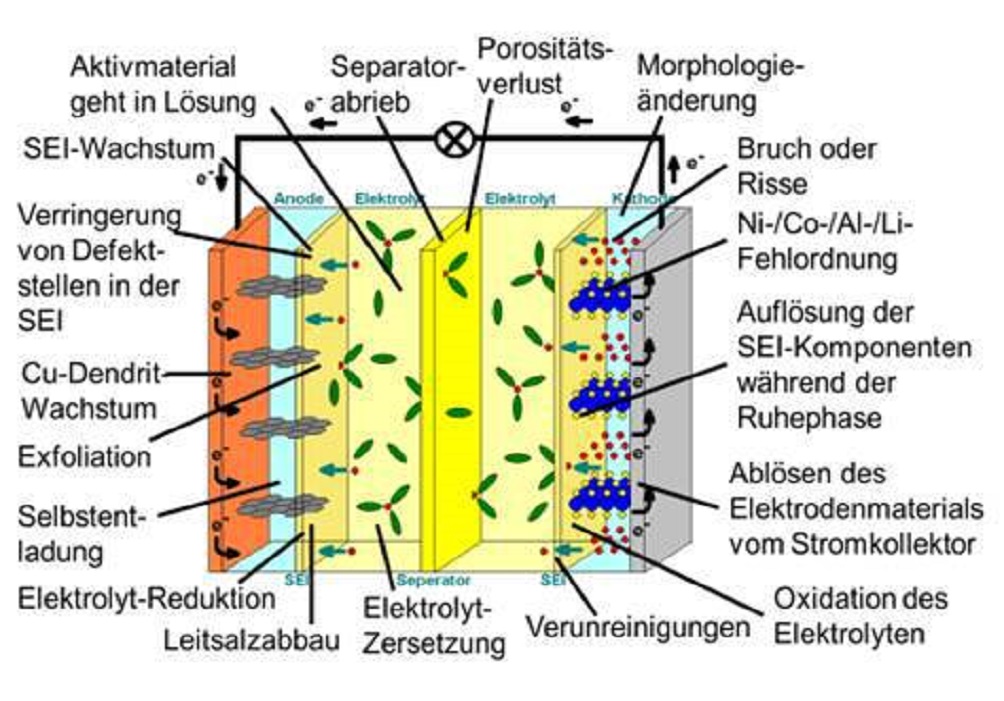Degradation and fatigue of energy storage systems
Lithium ion cells have been utilized in a variety of electrical devices during the last 20 years. Today, the commercialization of lithium ion battery systems in emerging fields like electro mobility and stationary energy storage applications is the next step ahead. Detailed knowledge about the fatigue mechanisms is essential for the development of Lithium ion batteries with a long lifetime that guarantees a cost efficient usage.
At the IAM-ESS different approaches involving “in operando” and “post mortem” techniques are applied to study active materials, passive components, as well as the interfaces between them. An overview over the possible degradation phenomena observed in a typical lithium ion cell is shown in the left figure below. The “in operando” investigations are mainly performed using high energy synchrotron and neutron radiation for diffraction experiments. Thereby, either (commercial) full lithium ion cells in different geometries (typically cylindrical, prismatic, or pouch) or specially designed and mainly in-house developed test cells are analyzed. This kind of investigation allows for the studying of the fatigue behavior under real life conditions, without modifying the cell chemistry. Additionally, different electrochemical load profiles can be applied during the experiments. An example is shown in the right figure that shows the lithium content of the cathode material of an 18650 type lithium ion cell determined by neutron diffraction.
The “post mortem” techniques usually imply the opening of a cell and the extraction of the components so that they can be analyzed independently. Since several components of a lithium ion cell are sensitive to air and/or humidity, the correct sample handling for these experiments is mandatory. Therefore, we developed dedicated opening and sampling tools for different cell geometries (full cells and test cells) to be used under defined conditions (e.g. glove boxes with argon atmosphere). The samples are transferred from the glove box to the various analytical devices using special transfer chambers to ensure only exposure to defined atmospheres.
References:
- O. Dolotko et al., J. Electrochem. Soc. 159, A2082-A2088 (2012).
Links:

